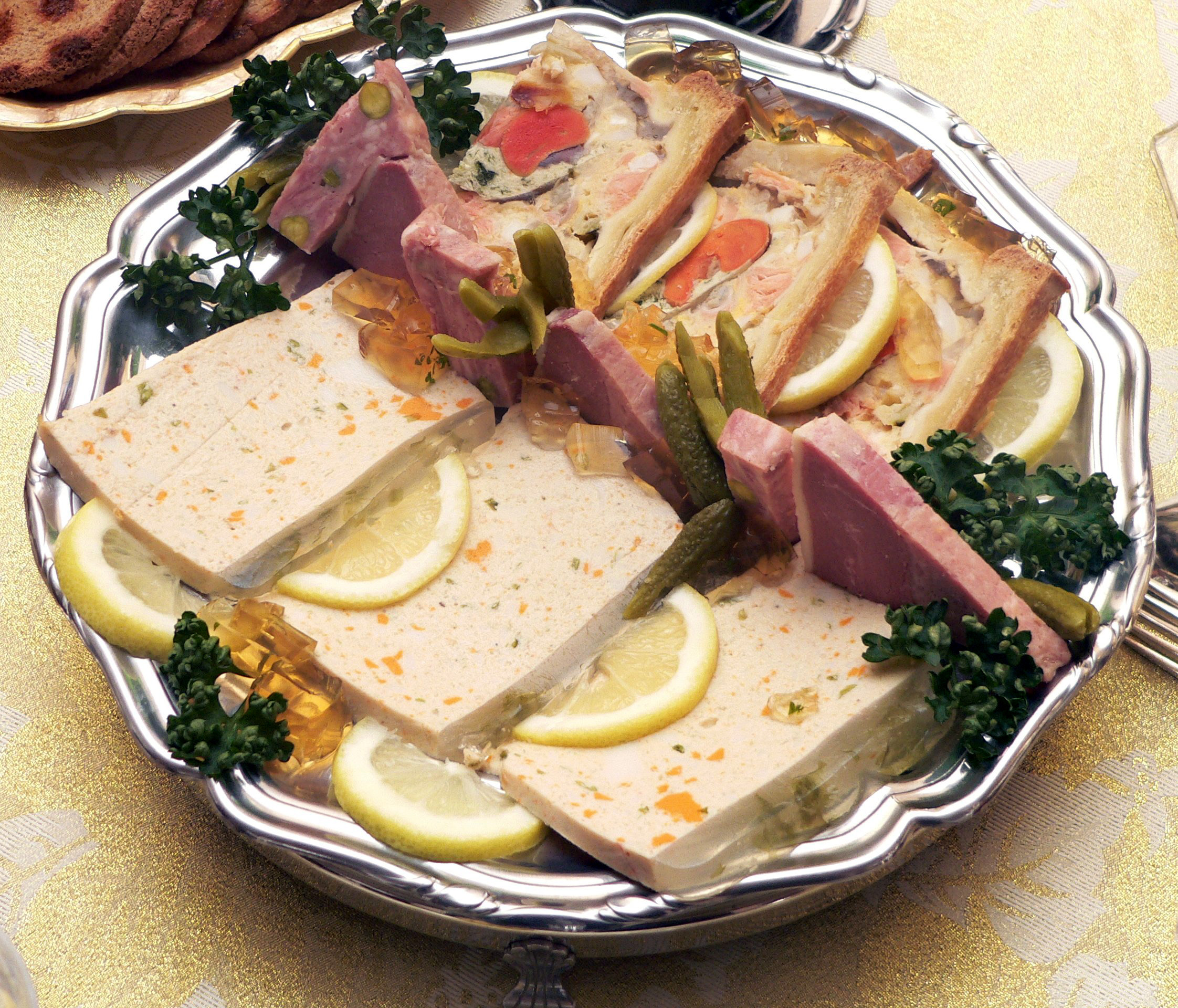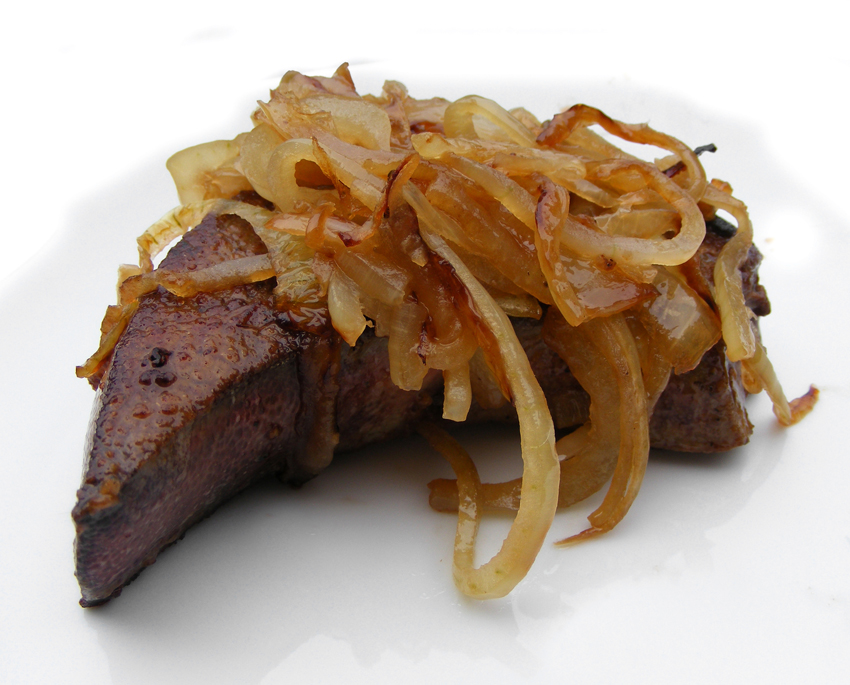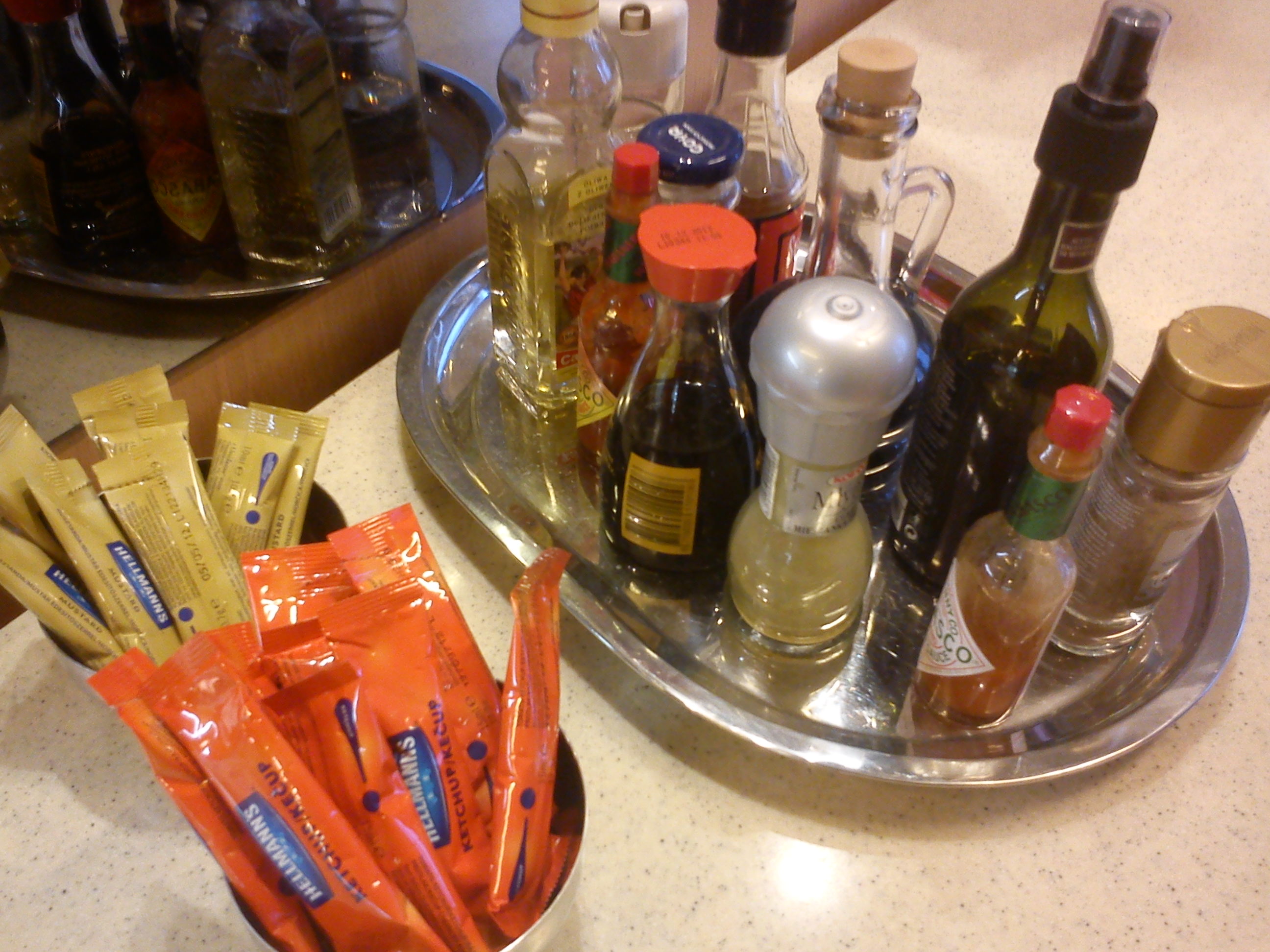|
Liver Spread
Liver spread is a Filipino canned spread product made from pureed pork, beef, or chicken liver mixed with cereal and/or offal similar to the French pâté and German liverwurst. Liver spread is usually eaten as a filling for sandwich bread and an accompaniment to crackers but it is also used as an ingredient in dishes like lechon sauce and the Tagalog version of '' paksiw na lechon''. It is also used in some households as an ingredient to some dishes e.g. caldereta and Filipino spaghetti. See also * Banana ketchup * Mama Sita's Holding Company Mama Sita's Holding Company, Inc. (founded as Marigold Commodities Corporation) is a Philippine based manufacturer of condiments, selling its products under the brand, Mama Sita's. The brand is named after Teresita "Mama Sita" C. Reyes, matriarch ... References {{Condiments Condiments Philippine condiments Food paste Philippine cuisine Liver (food) Offal Spreads (food) Ground meat ... [...More Info...] [...Related Items...] OR: [Wikipedia] [Google] [Baidu] |
Philippines
The Philippines (; fil, Pilipinas, links=no), officially the Republic of the Philippines ( fil, Republika ng Pilipinas, links=no), * bik, Republika kan Filipinas * ceb, Republika sa Pilipinas * cbk, República de Filipinas * hil, Republika sang Filipinas * ibg, Republika nat Filipinas * ilo, Republika ti Filipinas * ivv, Republika nu Filipinas * pam, Republika ning Filipinas * krj, Republika kang Pilipinas * mdh, Republika nu Pilipinas * mrw, Republika a Pilipinas * pag, Republika na Filipinas * xsb, Republika nin Pilipinas * sgd, Republika nan Pilipinas * tgl, Republika ng Pilipinas * tsg, Republika sin Pilipinas * war, Republika han Pilipinas * yka, Republika si Pilipinas In the recognized optional languages of the Philippines: * es, República de las Filipinas * ar, جمهورية الفلبين, Jumhūriyyat al-Filibbīn is an archipelagic country in Southeast Asia. It is situated in the western Pacific Ocean and consists of around 7,641 islands t ... [...More Info...] [...Related Items...] OR: [Wikipedia] [Google] [Baidu] |
Filipino Spaghetti
Filipino spaghetti is a Filipino adaptation of Italian spaghetti with Bolognese sauce. It has a distinctively sweet sauce, usually made from tomato sauce sweetened with brown sugar and banana ketchup. It is typically topped with sliced hot dogs or smoked longganisa sausages, giniling (ground meat), and grated cheese. It is regarded as a comfort food in Philippine cuisine. It is typically served on almost any special occasion, especially on children's birthdays. Origins The dish is believed to date back to the period between the 1940s and the 1960s. During the American Commonwealth Period, a shortage of tomato supplies in the Second World War forced the local development of banana ketchup. Spaghetti with Bolognese sauce was introduced by the Americans and was tweaked to suit the local Filipino predilection for sweet dishes. Description Filipino spaghetti is relatively cheap and easy to make, which is part of the reason for its popularity. First, minced garlic and onions are ... [...More Info...] [...Related Items...] OR: [Wikipedia] [Google] [Baidu] |
Offal
Offal (), also called variety meats, pluck or organ meats, is the organs of a butchered animal. The word does not refer to a particular list of edible organs, which varies by culture and region, but usually excludes muscle. Offal may also refer to the by-products of milled grains, such as corn or wheat. Some cultures strongly consider offal as food to be taboo, while others use it as everyday food or even as delicacies. Certain offal dishes—including '' foie gras'', '' pâté'', and haggis —are internationally regarded as gourmet food in the culinary arts. Others remain part of traditional regional cuisine and may be consumed especially during holidays. This includes sweetbread, Jewish chopped liver, U.S. chitterlings, Mexican menudo, as well as many other dishes. On the other hand, intestines are traditionally used as casing for sausages. Depending on the context, ''offal'' may refer only to those parts of an animal carcass discarded after butchering or skinning ... [...More Info...] [...Related Items...] OR: [Wikipedia] [Google] [Baidu] |
Liver (food)
The liver of mammals, fowl, and fish is commonly eaten as food by humans (see offal). Pork, lamb, veal, beef, chicken, goose, and cod livers are widely available from butchers and supermarkets while stingray and burbot livers are common in some European countries. Animal livers are rich in iron, copper, the B vitamins and preformed vitamin A. Daily consumption of liver can be harmful; for instance, vitamin A toxicity has been proven to cause medical issues to babies born of pregnant mothers who consumed too much vitamin A. A single serving of beef liver exceeds the tolerable upper intake level of vitamin A. 100 g cod liver contains 5 mg of vitamin A and 100 µg of vitamin D. Liver contains large amounts of vitamin B12, and this was one of the factors that led to the discovery of the vitamin. Etymology From Middle English liver, from Old English , from Proto-Germanic , from Proto-Indo-European "to smear, smudge, stick", from Proto-Indo-European - "to be sl ... [...More Info...] [...Related Items...] OR: [Wikipedia] [Google] [Baidu] |
Philippine Cuisine
Filipino cuisine ( fil, lutong Pilipino/pagkaing Pilipino) is composed of the cuisines of more than a hundred distinct ethnolinguistic groups found throughout the Philippine archipelago. A majority of mainstream Filipino dishes that compose Filipino cuisine are from the food traditions of various ethnolinguistic groups and tribes of the archipelago, including the Ilocano, Pangasinan, Kapampangan, Tagalog, Bicolano, Visayan, Chavacano and Maranao ethnolinguistic groups. The styles of preparation and dishes associated with them have evolved over many centuries from a largely indigenous (largely Austronesian) base shared with maritime Southeast Asia with varied influences from Chinese, Spanish and American cuisines, in line with the major waves of influence that had enriched the cultures of the archipelago, as well as others adapted to indigenous ingredients and the local palate. [...More Info...] [...Related Items...] OR: [Wikipedia] [Google] [Baidu] |
Food Paste
A food paste is a semi-liquid colloidal suspension, emulsion, or aggregation used in food preparation or eaten directly as a spread. Pastes are often highly spicy or aromatic, are often prepared well in advance of actual usage, and are often made into a preserve for future use. Common pastes are some fruit preserves, curry pastes, and nut pastes. Purées are food pastes made from already cooked ingredients. Some food pastes are considered to be condiments and are used directly, while others are made into sauces, which are more liquidy than paste. Ketchup and prepared mustard are pastes that are used both directly as condiments and as ingredients in sauces. Many food pastes are an intermediary stage in the preparation of food. Perhaps the most notable of such intermediary food pastes is dough. A paste made of fat and flour and often stock or milk is an important intermediary for the basis for a sauce or a binder for stuffing, whether called a '' beurre manié'', a roux or panada ... [...More Info...] [...Related Items...] OR: [Wikipedia] [Google] [Baidu] |
Condiments
A condiment is a preparation that is added to food, typically after cooking, to impart a specific flavor, to enhance the flavor, or to complement the dish. A table condiment or table sauce is more specifically a condiment that is served separately from the food and is added to taste by the diner. Condiments are sometimes added prior to serving, for example, in a sandwich made with ketchup, mustard or mayonnaise. Some condiments are used during cooking to add flavor or texture: barbecue sauce, compound butter, teriyaki sauce, soy sauce, Marmite and sour cream are examples. Many condiments, such as mustard or ketchup, are available in single-serving packets, commonly when supplied with take-out or fast food meals. Definition The exact definition of a condiment varies. Some definitions encompass spices and herbs, including salt and pepper, using the term interchangeably with ''seasoning''. Others restrict the definition to include only "prepared food compound containing one or ... [...More Info...] [...Related Items...] OR: [Wikipedia] [Google] [Baidu] |
Mama Sita's Holding Company
Mama Sita's Holding Company, Inc. (founded as Marigold Commodities Corporation) is a Philippine based manufacturer of condiments, selling its products under the brand, Mama Sita's. The brand is named after Teresita "Mama Sita" C. Reyes, matriarch of the company's founders, the spouses Bartolome B. Lapus and Clara C. Reyes-Lapus. Mama Sita's products are available abroad such as in supermarket shelves in North America, Canada, Australia, New Zealand, and European countries. They also distribute in Hong Kong, Singapore, Thailand, Malaysia, Japan, Korea, India and Pakistan. The Middle East is the biggest market with the Kingdom of Saudi Arabia, the United Arab Emirates, Kuwait, and Qatar as major consumers. About Teresita Reyes Teresita "Mama Sita" C. Reyes was born in Manila on May 11, 1917, the eldest child of Justice Alex Reyes and Engracia "Aling Asiang" Cruz-Reyes, founder of The Aristocrat Restaurant. She had an interest in Filipino food and raised a business devoted to creati ... [...More Info...] [...Related Items...] OR: [Wikipedia] [Google] [Baidu] |
Banana Ketchup
Banana ketchup (or banana sauce) is a popular Philippine fruit ketchup condiment made from banana, sugar, vinegar, and spices. Its natural color is brownish-yellow but it is often dyed red to resemble tomato ketchup. Banana ketchup was first produced in the Philippines during World War II due to a wartime shortage of tomatoes but a comparatively high production of bananas. Use In Filipino households, this condiment is used on many assorted dishes: Filipino spaghetti, omelettes (''torta''), hot dogs, hamburgers, french fries, fish, charcoal-grilled pork barbecue and chicken skewers, fried chicken, and other meats. History Filipina food technologist Maria Y. Orosa (1892–1945) is credited with inventing the product. In 1942, banana ketchup was first mass-produced commercially by Magdalo V. Francisco Sr. who founded the brand name Mafran (a portmanteau of his given name and surname) which he registered with the Bureau of Patents. Francisco sought funding from Tirso T. Rey ... [...More Info...] [...Related Items...] OR: [Wikipedia] [Google] [Baidu] |
Caldereta
Kaldereta or caldereta is a goat meat stew from the Philippines. Variations of the dish use beef, chicken, or pork. Commonly, the goat meat is stewed with vegetables and liver paste. Vegetables may include tomatoes, potatoes, olives, bell peppers, and hot peppers. Kaldereta sometimes includes tomato sauce. Caldereta's name is derived from the Spanish word ''caldera'' meaning cauldron. The dish is similar to meat stews from the Iberian Peninsula and was brought to the Philippines by the Spaniards during their 300-year occupation of the Philippines. It also has its similarities with afritada and mechado that it uses tomatoes, potatoes, carrots and bell peppers as its ingredients. Kaldereta is served during special occasions, parties, and festivities. Preparation Start by heating around 1/4 cup of cooking oil in a stock pot. Cook onion, garlic and goat meat, beef or chicken and sauté until the meat is browned. For beef, a pressure cooker can be used to tenderize the meat ... [...More Info...] [...Related Items...] OR: [Wikipedia] [Google] [Baidu] |
Spread (food)
A spread is a food that is spread, generally with a knife, onto foods such as bread and crackers. Spreads are added to food to enhance the flavor or texture of the food, which may be considered bland without it. Butter and soft cheeses are typical spreads. A sandwich spread is a spreadable condiment used in a sandwich, in addition to more solid ingredients. Butter, mayonnaise, prepared mustard, and ketchup are typical sandwich spreads, along with their variants such as Thousand Island dressing, Tartar sauce, and Russian dressing. Spreads are different from dips, such as salsa, which are generally not applied to spread onto food, but have food dipped into them, instead. Common spreads include dairy spreads (such as cheeses, creams, and butters, although the term "butter" is broadly applied to many spreads), margarines, honey, plant-derived spreads (such as jams, jellies, and hummus), yeast spreads (such as vegemite and marmite), and meat-based spreads (such as ''pâté''). ... [...More Info...] [...Related Items...] OR: [Wikipedia] [Google] [Baidu] |
Paksiw
''Paksiw'' () is a Filipino style of cooking, whose name means "to cook and simmer in vinegar". Common dishes bearing the term, however, can vary substantially depending on what is being cooked. ''Pinangat na isda'' may sometimes also be referred to as ''paksiw'', though it is a different but related dish that uses sour fruits like calamansi, ''kamias'' (bilimbi) or ''sampalok'' (tamarind) to sour the broth rather than vinegar. Types ''Paksiw'' refers to a wide range of very different dishes that are cooked in a vinegar broth. They include the following: ''Ginataang paksiw na isda'' A common variant of ''ginataang isda'' (fish in coconut milk) that adds vinegar to sour the broth. This variant combines the ''ginataan'' and ''paksiw'' methods of cooking in Filipino cuisine. ''Inun-unan'' ''Inun-unan'' or ''inun-onan'' is a notable Visayan version of the fish ''paksiw'' dish spiced primarily with ginger, as well as onions, shallots, pepper, salt, and sometimes siling haba chi ... [...More Info...] [...Related Items...] OR: [Wikipedia] [Google] [Baidu] |






